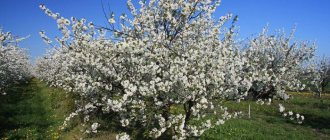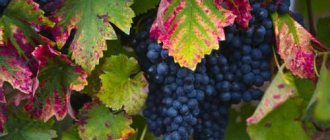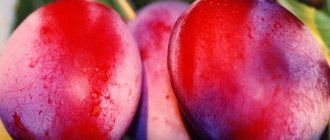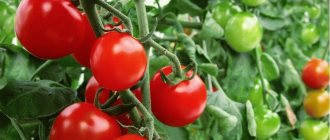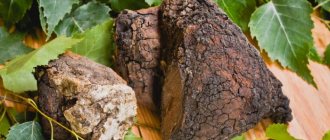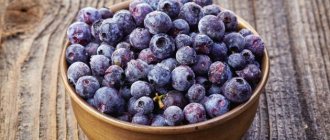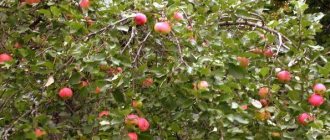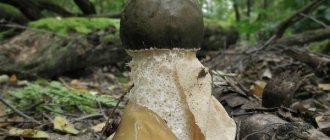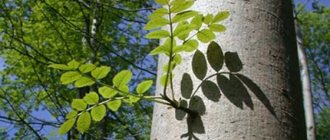Common blueberry is a perennial low-growing shrub of the heather family with edible and medicinal berries. The height of the plant is 20-25 cm, in wetlands it reaches 50-60 cm. Blueberries are also called myrtle-leaved because the leaves are similar in shape to the foliage of the myrtle tree. Chernega and blueberry are also names of plants and fruits that clearly have a dialectal connotation.
The health benefits and harms of blueberries have long been known to doctors and nutritionists in many countries. The plant is widely known for its use as food, medicine, and cosmetology. But before using fruits and green shoots, you need to get acquainted with their beneficial and harmful properties.
What are blueberries
Where do blueberries grow? Its habitat is the subarctic zone, taiga and mixed forests of northern Europe, Asia and North America. Blueberries are native to North America, where they are called “star berries” because the flowers of the bush resemble a star.
In Russia, bushes with healthy berries are common in coniferous and mixed forests. Because of their love for moisture and shade, blueberries grow near swamps. You can find the berry on a mountain slope. In Rus', blueberry is called the “people's berry” because it is found in almost all regions. The densest and richest blueberries are in the Nizhny Novgorod, Chelyabinsk, Leningrad, Tyumen regions, and in the Khabarovsk Territory. Karelia, Siberia, and Trans-Urals are rich in blueberries.
What does blueberry look like?
Blueberries are a blue-black berry in the shape of a ball or ellipse with a diameter of up to 8 mm. In cross section, the fruit is red-violet with many small seeds. Juicy, sweet and sour blueberries have good taste and low calorie content.
The name of the bush and fruit comes from the color of the ripe berries. Anthocyanins, components of the juice, interact with air and darken. Blueberries blacken, that is, they turn clothes and hands black if crushed. Such stains are difficult to wash and remove. This allows you to use healthy berries as a natural, and even safe, dye.
How blueberries grow in the forest
Blueberry is a herbaceous plant. The low shrub has creeping shoots with thin, smooth, finely serrated leaves. Bushes are often arranged in groups, huddling together. There are many such blueberry meadows in pine forests, spruce and mixed forests.
Blueberry bush lives up to 40 years. The first berries ripen after 4 years. The richest harvest appears on plants older than 10 years, which have been actively bearing fruit for 5-7 years. Then the berries become fewer and fewer.
How blueberries bloom and when they ripen
Blueberry blooms with single white-greenish flowers with a pink tint in May-June. The flowers ripen in July–August: blue-black berries in the shape of a ball or ellipse with a diameter of up to 8 mm. The weight of the berry barely reaches 1 g. The juicy pulp is purple with a reddish tint. The taste of the berries is sweet with a slight sourness.
Reproduction
There are several methods, each of which can be used by both an experienced gardener and a novice summer resident.
Division
In September-October, dig up a pre-selected mother bush; you must act as carefully as possible.
- Divide it into several parts so that each of them has 5 buds for resumption of growth.
- Plant all seedlings in the prepared area.
Related article:
Propagating gooseberries in a new way
Seeds
A little troublesome, but a simple and affordable option.
- When harvesting, collect the ripest berries, sort them, and remove the leaves.
- Grind in an enamel container with a wooden mortar until a paste forms.
- Fill with clean water, collect the floating pulp and empty seeds.
- Those that are suitable for landing will sink to the bottom.
- Drain the water and refill. Repeat the procedure until the liquid becomes completely clean and transparent.
- Distribute the seeds that have sunk to the bottom on a sheet of paper towel or cloth. Dry.
It is believed that such material is already ready for sowing in the fall. However, some gardeners practice preliminary stratification of seeds on the refrigerator shelf and spring planting. If frozen berries were used, then additional hardening is no longer required.
- Fill the container or seedling cassettes with prepared peat and sand substrate.
- Spray water on the surface of the soil with a spray bottle, sow and cover with polyethylene or glass.
- Before emergence, it is necessary to regularly ventilate and water the soil.
- At the end of the warm season, the boxes with seedlings need to be brought into the house.
- Picking of grown seedlings is carried out in the spring when stable heat is established. Transplantation into open ground conditions is carried out a year after sowing in containers.
Related article:
Last autumn treatment of gooseberries, currants and fruit trees
Cuttings
If your dacha already has several mature bushes, they can be propagated by cuttings. The most branched and largest of them are suitable for this. The right time for manipulation is the end of summer.
- Use pruning shears or a sharp knife to cut off several branches.
- To speed up the rooting process, it is recommended to soak in a root growth stimulator.
- Water the containers with the substrate, plant the cuttings in them and cover with film.
- Regular watering and ventilation will allow the plants to take root before the beginning of October.
- Plant seedlings on a pre-prepared bed. Before the onset of cold weather, they will have time to adapt to the changed conditions, and in the spring, after the snow melts, the active growth phase will begin.
Blueberry plant chemical composition
A rejuvenating berry – this is what people have been saying about blueberries for a long time. The beneficial fruits of the plant contain many antioxidants that help resist stress and fight malignant tumors. The “star berry” has a rich and healing composition.
- Iron, nickel, potassium, magnesium, calcium, copper, phosphorus, cobalt, manganese. Important elements for a healthy human condition.
- Organic acids: ascorbic, citric, malic, oxalic, lactic, succinic, nicotinic, quinic. Take part in metabolic processes.
- Vitamins K, C, B1, B2, B6, E. Provide vital functions of the body and affect well-being.
- Antioxidants prontoanthocyanidin, flavonoid, tannin. Protect human organs from harmful external influences.
- Blueberry carotenoids improve vision.
- Tannins help the heart function.
- Glycosides and polysaccharides regulate blood sugar levels and strengthen the immune system.
- Essential oils normalize the functioning of the nervous and endocrine systems, and even out the water-salt balance.
- Pectin.
- Squirrels.
- Cellulose.
- Carbohydrates.
Pests and diseases
Blueberries have strong immunity, but occasionally the bushes are susceptible to viral infections. Red ring and necrotic spotting, dwarfism, filamentous branches, mosaic - these diseases cannot be treated, so infected plants are burned.
Insects
| Signs of defeat | Fighting methods | Prevention |
| Aphid | ||
| Insects stick to shoots, the underside of leaves, flowers and fruits in colonies. The juices are sucked out of the plant. Large areas of the bushes dry out and die. | Once a week, spray with a liquid with a pungent odor of onion or garlic, mustard powder, or hot pepper. In case of global damage, Inta-Vir, Mospilan, Confidor-Maxi, Admiral, Iskra-Bio are used. Dilute according to the instructions on the package. | In the fall, the foliage is burned, the bushes are mulched with a layer of 4-5 cm. In the spring, they are treated with the Karate insecticide until the leaves appear. |
| Shchitovka | ||
| Looks like round gray-brown growths. At first they are flat, then gradually inflate. Plant tissues located nearby turn yellow, red and die. | The scale insects are lubricated with kerosene, machine oil or turpentine and collected by hand. After this, the bushes are treated (Phosbecid, Aktara, Aktellik). | |
Fungal infections
| Disease | Signs | Fighting methods |
| Stem cancer | The stems are covered with dark brown cankers edged with red rings. The plant begins to rot. | 1. Do not overwater. 2. You can’t use too much nitrogen fertilizer. 3. Treat after flowering with a weak copper solution. 4. In spring and autumn (after harvesting) spray with Benomil, Kuprozan, Topsin-M. Diluted according to instructions. |
| Moniliosis | Brown spots appear on leaves and fruits. The disease appears in damp, cold weather in spring. | |
| Gray rot | First, a gray spot becomes noticeable on the stem. It quickly grows throughout the bush, making the stem and fruit watery with white fluff. |
Birds
Birds like ripe berries. The plantings are protected with thin nets attached to the frame. Christmas tree glitter rain, which is hung on a stretched rope, helps scare away birds.
Blueberry calories
The rich composition and benefits of wild berries are obvious. How many calories are in blueberries? The product is considered low-calorie, as it contains only 44 kcal per 100 grams.
When frozen, blueberries retain all their properties. The calorie content of frozen fruits is even lower: 39.4 kcal. Protein – 0.5 g, fat – 0.6 g, carbohydrates – 8 g, dietary fiber – 3.1 g, water – 86 g.
The glycemic index is calculated based on how quickly carbohydrates are digested and increase blood sugar levels. For blueberries, this indicator is low - only 53, so it is used by diabetics, supporters of a healthy diet and those losing weight to control appetite.
From the forest to the dacha
On specialized gardening forums you can often find discussions between amateurs and beginners: can a wild blueberry bush dug up in the forest be replanted and grown in a garden plot. It is believed that such an idea does not justify itself. Even with successful rooting in a new place, such a specimen does not set fruit.
Related article:
Growing and caring for golden currants
However, many gardeners also show the opposite result, sharing their positive experience of planting forest bushes at their dacha.
When transplanting blueberries to the territory of a garden or summer cottage, when digging it up and moving it, it is important to preserve the “native” earthen ball around the rhizome of the plant. In such a substrate, adaptation to new conditions occurs faster. Particular attention should be paid to the preservation and collection of mycorrhiza - the symbiosis of fungal mycelium with plant roots.
It is also worth collecting soil and coniferous litter from the place in the forest where the bush was dug into a bag. This substrate can be used for planting and mulching.
Blueberries benefits for women
“Rejuvenating” blueberries have long been useful for women. A complex of useful vitamins has a beneficial effect on skin elasticity and saturation with moisture. If you eat berries and drink tea from blueberry shoots, collagen and elastin are produced much more actively. The youthfulness of the skin is prolonged, wrinkles are smoothed out. Due to the beneficial properties of antioxidants, tissues do not age longer and are restored. Blood circulation works better. This has a positive effect on health, appearance, general well-being and mood.
Blueberries act as an antispasmodic. Therefore, the berry can be consumed during menstruation. Women during menopause often suffer from annoying and debilitating hot flashes. Black fruits can make their number smaller and their intensity lower.
The condition of your hair will improve significantly if you regularly eat blueberries for six months. The hair will become shiny, thicker, and dandruff will disappear.
Masks made from berries and a decoction of plant shoots for wiping and rinsing are also useful for the skin of the face and head. Blueberries are a therapeutic and prophylactic remedy for varicose veins.
Blueberries during pregnancy and breastfeeding
Expectant mothers need a full range of healthy vitamins and minerals that are necessary for the woman herself and her baby. Blueberries during pregnancy will help the mother and child get many essential substances. It is worth remembering its composition, and it will become clear that the berry will maintain the pregnant woman’s hemoglobin level within the required norm, normalize blood pressure, and help the formation of skeletal muscle tissue and the child’s central nervous system.
Regular consumption of berries during pregnancy will help avoid hair loss, brittle nails, and skin problems.
A decoction of dry blueberries will relieve swelling - a fairly common occurrence during pregnancy.
The use of many medications during pregnancy is contraindicated. You can soothe sore teeth with the healthy juice of fresh berries by rinsing your mouth with them.
The period of breastfeeding forces every woman to reconsider her diet so as not to harm the newborn. Bright berries can cause an allergic reaction. Blueberries during breastfeeding are not dangerous for either the baby or the mother, provided they are not abused. Moreover, doctors recommend that breastfeeding women eat blueberry due to its variety of beneficial properties.
Blueberry fruit is considered hypoallergenic. This is wrong. There is an allergen in its composition, but in very small quantities. If you eat berries in reasonable quantities, you won't get into trouble.
Landing
It is necessary to prepare holes with dimensions of 60*60*60 cm. Cover the bottom of each depression with a drainage layer - expanded clay, small crushed stone or broken brick. If the acidity of the soil has increased artificially (on its own), it is often practiced to cover the walls of the pit with polyethylene in order to maintain the parameter at the required value.
Combine the soil from the pits with peat. To acidify the bed, add citric or oxalic acid, sulfur or fallen pine needles. Mix and fill the holes with the resulting substrate. Leave for 2-3 weeks.
As a soil oxidizer, some summer residents use watering the designated area with electrolyte, and also prepare the beds as for growing blueberries and cranberries.
Immediately before planting, generously water the depressions with water with the addition of citric acid (1 teaspoon per 1 liter of liquid). Place a seedling in the center and spread the roots along the bottom of the hole.
Related article:
Mistakes when pruning grapes
Cover with soil and compact. Water and distribute the mulch layer - sawdust, pine bark, peat and oak leaves. Often pine needles collected from the forest are used as a covering material.
Why blueberries are good for children
Pediatricians advise giving blueberries to children. Its properties are especially relevant during seasonal exacerbations of viral colds. Berries will strengthen the immune system, alleviate the symptoms of the disease, and have a general strengthening effect.
The calcium contained in the healthy composition will strengthen the child’s skeleton and help him grow. If you have an upset stomach, blueberries will cure diarrhea and restore intestinal microflora. The fruits will help strengthen the central nervous system, improve sleep and activate brain function.
Berries should be introduced into a child’s diet no earlier than one and a half years, so that the child’s stomach can process the berries. It’s better to start doing this with purees and in small quantities, gradually increasing the portion.
Applications of berries
Blueberries are widely used in various areas of human life. The product has a unique chemical composition and pleasant taste, so the variety is used both in cooking and in medicine.
In cooking
Many delicious and healthy dishes are prepared using blueberries. Most often, the ingredient is used to make desserts - blueberry muffins and pies are the national pride of many English-speaking countries.
The berry goes just as tasty with poultry. But sweet and sour blueberry sauce goes well with veal and pork steaks.
Smoothies and ice cream are prepared based on the product. Blueberries are also used as decorations and salad dressings.
In cosmetology
Blueberries are widely used as an anti-aging agent. The leaves and roots are used to prepare decoctions and infusions that tighten the skin.
Berries often become the basis of various masks and creams. Such products are suitable for almost any skin and, depending on the accompanying ingredients, can both nourish dry epidermis and remove oily sheen.
Blueberries are used to break down fat deposits on the hips and abdomen. The plant removes cellulite and smoothes the skin.
In medicine
In folk medicine, there are many recipes in which the main ingredient is alpine berry. Among them are:
- To combat conjunctivitis. 1 tablespoon of dry blueberries per day helps to cope with this problem.
- Treatment of myopia. The juice from the fresh product is diluted with water in a ratio of 1 to 2 and 5 drops are dropped into the eyes every morning.
- Help with diabetes. This disease is treated with a collection of nettle leaves, blueberries and dandelion root. All ingredients are poured with boiling water and left for an hour. The product is used three times a day
- Fighting gout. Alpine berries (80 g) are poured with a liter of water and heated in a steam bath for an hour. The infusion is taken five times a day, a tablespoon.
There is also a drink that boosts immunity. It is classified as a general tonic medicine. To prepare it you will need both berries and blueberry leaves. Pour boiling water over all ingredients and let it brew. The decoction is taken 3 tablespoons after meals.
Beneficial properties of blueberries
The beneficial properties of blueberries extend to many human organs.
Supports eye health
Black berries sharpen vision and help with myopia. To do this, they use fresh berries, juice, jams, preserves, decoctions, and even use freshly squeezed juice for eye drops, after diluting it with water.
Prevents heart and vascular diseases
The beneficial organic acids and magnesium contained in the fruit strengthen the heart and blood vessels and normalize blood pressure. You can drink infusions, fruit drinks, juice made from the berries of the plant’s branches.
For the nervous system
The beneficial properties of manganese in blueberries contribute to the normal functioning of the nervous and circulatory systems.
Improves skin appearance
A large number of antioxidants and vitamin C protect skin cells from harmful environmental influences, increase its tone, prevent premature aging and the appearance of wrinkles. The berry is used as food, masks, and decoctions.
Burns, eczema, ulcers and other skin problems have long been treated with lotions and compresses made from the berries and shoots of the plant.
Blueberries will also help to prevent and treat varicose veins.
For immunity
Black berries and the beneficial properties of a decoction of leaves will strengthen and increase immunity, prevent infectious and viral diseases.
Improves memory
The lack of nutrients and antioxidants affects memory - it becomes worse. Their presence in black berries activates brain function, improves memory, and reduces the likelihood of brain disorders in the form of Alzheimer's disease.
For bones and joints
The plant strengthens bone tissue and is a preventative against osteoporosis. Blueberries are used to treat rheumatism and gout. It is used not only internally: lotions are made from a beneficial decoction of the leaves and applied to sore spots.
For the respiratory system
The anti-inflammatory, bactericidal, antifungal properties of blueberry fruits help with infections and colds of the respiratory system.
For the gallbladder and liver
This useful plant protects the liver from the adverse effects of harmful substances, cleanses it, and normalizes the level of bile in the gallbladder.
For the intestines
The nutrients contained in black berries normalize intestinal function, remove toxins, act as a laxative for constipation, and for diarrhea, blueberries strengthen and exhibit astringent properties.
Prevention and treatment of diabetes
Blueberries for type 2 diabetes are used as a preventive and therapeutic agent, as they are able to keep glucose levels within normal limits.
Dry leaves of the plant are used to treat hemorrhoids. Crushed berries are used for throat diseases and coughs. Used as a diuretic to prevent urolithiasis. Improves psycho-emotional state. Useful decoctions and fresh berries are eaten for anemia. In gynecology, douching with an infusion of leaves is used. Berries are eaten during a diet. Blueberry is popular in cosmetology and cooking. It is included in many dishes and is consumed as an independent product.
Harvesting fruits
Drying of leaves is carried out only in a dark and ventilated place, periodically stirring the material. When everything is dry, the leaves are separated from the stem and crushed.
There are several basic ways to prepare fruits for the winter.
Drying. One of the oldest ways to preserve all the beneficial substances inside the berry. Before drying, all fruits should be carefully sorted to exclude the presence of branches, leaves or spoiled fruits. Then the blueberries are spread in a thin layer on a baking sheet and exposed to the sun
It is important to stir only periodically to prevent the appearance of mold and premature rotting.
Dried fruits should be stored in a fabric bag that must allow air to pass through. Some people use paper bags for this.
Freezing. You can use it if you have enough space in your freezer. Thus, the fruits retain much more vitamins and are as healthy as fresh berries. Before sending them into the cold, they should be thoroughly washed and dried so that they do not stick together too much. Some housewives recommend immediately grinding the product, which will be immediately ready for use in winter
Please note that after several repeated cycles of defrosting and freezing, blueberries will lose their beneficial properties. Therefore, it is advisable to initially form the berries into dishes in small disposable portions.
Jam
Perfect for food lovers. Blueberry jam will make your pancakes or pancakes even tastier and more enjoyable. There are many recipes for preparing such a product that everyone can choose to their taste.
Blueberries are a unique berry that grows only in temperate climates. Its taste and healing characteristics allow you to tone the body and reduce the risk of various diseases.
To learn how to prepare blueberries for the winter, see the following video.
https://fb.ru/article/194552/yagoda-chernika-gde-rastet-gde-rastet-chernika-v-podmoskove-lesa-gde-rastet-chernika-v-rossii
https://godnyesovety.ru/1128-lesnaya-chernika-do-kakogo-mesyaca-rastet-gde-sobirat.html
https://eda-land.ru/yagody/chernika/gde-rastet/
How to store the product
Preparing berries for the winter is not the easiest thing, because after heat treatment, blueberries lose the lion's share of their beneficial properties. However, there are several ways to preserve berries for the cold period:
- Drying. The dried product is very concentrated, it retains most vitamins and microelements. The process itself does not take much time - the product is slightly dried at a temperature of 40°C, and then dried in an electric dryer at 60°C.
- Freezing. This type of fruit processing also allows you to preserve beneficial properties for a long time.
- Conservation. A popular way to store blueberries for a long time is to grind the fruits with sugar. In this form, the product can be preserved or simply left in the refrigerator.
Please note that only fresh product is suitable for long-term storage. Dry blueberries with bitterness indicate the beginning of the fermentation process. Such berries are not suitable for consumption.
Contraindications
Blueberries have no obvious contraindications as such. But you should be extremely careful when consuming this berry for the first time - do not overdo it with the dosage. Despite the extremely rare manifestations of an allergic reaction to blueberries, such a situation may very well happen.
It is not recommended to consume berries in large quantities for people suffering from constipation, stomach diseases and urolithiasis.
And finally, the most important thing is that you should be especially careful when eating wild berries collected in places with questionable ecology and high background radiation. After all, if in the places where blueberries grow there is a risk of radioactive contamination, then the berry, like a sponge, will absorb it. That is why you should carefully approach the issue of picking berries, because your health depends on it.
